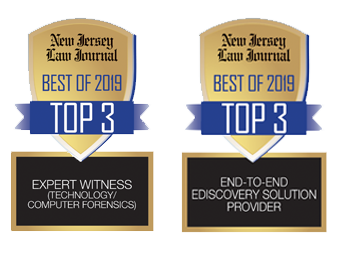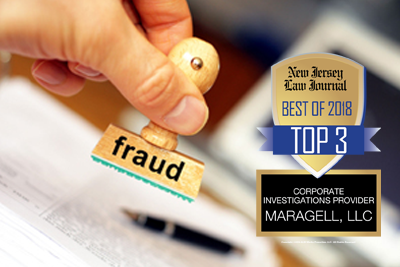
A Federal court in New Jersey sanctioned Outback Steakhouse for failing to preserve enough video camera footage of a customer’s slip and fall.
Despite the restaurant manager’s efforts to export nearly 30 minutes of surveillance video, the court determined the selective collection and preservation of but a few minutes of video that preceded the plaintiff’s fall on an alleged greasy substance was insufficient. Because the DVR system used by Outback was configured to overwrite its data every seven days, by the time the Plaintiff sent her preservation letter (some twelve days later which sought a total of 48 hours of video) the relevant electronic evidence had already been destroyed.
It was revealed during discovery that Outback had a policy and a procedure in place to check the floor as they work and to report incidents to management, but it did not have a policy (or any employee training) on the preservation of electronic evidence, thereby leaving each manager to determine how much video evidence to collect.
In response to the permanent loss of the additional requested video evidence, Plaintiff filed a motion for sanctions pursuant to Federal Rule of Civil Procedure 37. The court determined that because Outback was a sophisticated litigant, it was aware it had a duty to preserve relevant evidence. The court found Outback failed to fulfill its duty because it left the task of determining what to preserve to individual restaurant managers who were given no guidance on how to execute the company’s preservation duties. As such, the court ruled the jury could be instructed that Outback intentionally failed to preserve the disputed video evidence and that it may presume the lost video footage was unfavorable to Outback.
Slip and fall cases typically involve the routine application of the facts to long established premises liability laws, and this one does not appear to be any different. However, it is quite instructive on the issues of (i) electronic evidence preservation and (ii) company policies and procedures.
You can read the Court’s opinion in Nagy v. Outback Steakhouse here.
A few takeaways to consider:
Best Practices regarding Surveillance Camera Footage
- Take Inventory: Businesses should act quickly after an incident has occurred to determine what video evidence exists. This inquiry should focus not only on your own video systems/evidence but also third-party video feeds such as neighboring businesses and homes, traffic cameras, and municipal/police surveillance systems.
- Data is ephemeral. As seen in the Outback case, the surveillance video was overwritten by the system after just seven days. Third-party data retention could be even less, so act fast to canvass the area and request their cooperation to preserve the evidence (even if they don’t want to turn it over immediately without a subpoena or court order).
- Video systems are highly proprietary. You may need to hire a forensic expert to preserve the data at issue. Often with surveillance camera/DVR data, the information is saved in a proprietary format and requires a product-specific export tool (and possibly even a viewer) to access the videos. While a forensic image of the hard drive located within the DVR system might satisfy the company’s preservation obligations, the image may prove useless unless there is a way of exporting and viewing it in a usable, and cost efficient, format.
- Have a written Evidence/ESI Policy and Procedure. For businesses that deal with public invitees, injuries are bound to occur. In addition to any policies and procedures for the reporting of accidents/injuries, it behooves businesses to include in those policies an evidence policy that addresses the types of evidence that should be preserved, by whom, and when. As seen in this example, the local restaurant managers are tasked with deciding what video to save, and how much. Given that Outback had a policy on floor sweeps, preserving an entire day’s video could have proven the employees fulfilled their duties as directed.
Best Practices for preserving ESI in General:
- Begin the preservation process early. Litigation takes place months/years after the fact, and ESI-related discovery issues may not be known until it is too late to preserve the evidence. Forensically imaging an entire computer or smartphone, or as in the Outback case, exporting a full day worth of video, may seem like an over-indulgence, but when compared to fighting a spoliation motion, it is money well spent.
- Handle With Care: Metadata on-board. Hiding behind your documents, photographs, and emails is its metadata. Metadata is constantly being updated as the user interacts with the ESI. As such:
- when dealing with thumb drives and other external storage devices, don’t insert them to see what they contain. Too often the file access dates will be updated by anti-virus scans or search functions conducted by the client and/or attorney. Rather, they should be delivered to an expert for preview/preservation.
- When dealing with specific, relevant emails, don’t forward the subject email, add it as an attachment to a new email when sending to counsel. The internal metadata (header) of the original email needs to be preserved—forwarding it replaces the original metadata with the forwarded email’s information. Tracing it will only lead back to you, not the original sender.
- When dealing with documents, preserve both the internal metadata and its system metadata. Internal metadata travels with the document, but system metadata can only be found on the device on which the file was created/saved/modified/edited. You may need to image an entire device in order to satisfy your preservation obligations, even if you think the document is the only relevant piece of evidence in your case.






 Dear Friends,
Dear Friends,



 Dear Friends,
Dear Friends,


